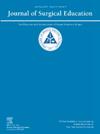改进医学生外科见习教学:学生想要的反馈与学生需要的反馈
IF 2.1
3区 医学
Q1 EDUCATION, SCIENTIFIC DISCIPLINES
引用次数: 0
摘要
目的探讨外科教师从学习者那里寻求反馈的类型,以提高教学技能,为开发更有用的评估工具提供信息。设计定性研究使用一小时,半结构化的虚拟访谈和反身性主题分析。美国西部单一学术健康中心的外科。参与者:9名主治外科医生(4名女性,5名男性),负责监督本科医学生见闻,分别代表3至6年、10至14年和≥20年的教学经验和不同的教育培训背景。结果:参与者认为教学是有回报的——提高了他们自己的知识,见证了学习者的成长——但也指出了时间压力、学习者负担过重、控制与自主之间的平衡等挫折。他们报告说,现有的学习者评估往往来得太晚,使用夸大的李克特评分,缺乏具体的叙述细节,限制了可操作的见解。教师建议有针对性的改进:直接的问题(例如,“这个人怎么做才能成为一个更好的老师?”),提示定性评论,包括花费的时间和教学背景(手术室、诊所、楼层),以及可观察到的教学行为的复选框。确定了一份教学行为和策略清单,为未来的仪器项目提供信息。结论外科教师需要及时、具体、内容丰富的反馈来推动教学的改进。在评估工具中嵌入可操作的叙述性评论和上下文变量的结构化提示,可以促进教师发展,并使评估与基于能力的教育目标保持一致。本文章由计算机程序翻译,如有差异,请以英文原文为准。
Improving Faculty Teaching of Medical Students During Surgical Clerkships: The Feedback they Want and the Feedback they Need
OBJECTIVE
To explore the types of feedback surgical faculty seek from learners to improve teaching skills and inform development of a more useful evaluation instrument.
DESIGN
Qualitative study using one-hour, semi-structured virtual interviews and reflexive thematic analysis.
SETTING
Department of Surgery at a single academic health center in the western United States.
PARTICIPANTS
Nine attending-level surgeons (4 female, 5 male) overseeing undergraduate medical student clerkships, representing 3 to 6, 10 to 14, and ≥20 years of teaching experience and varied educational training backgrounds.
RESULTS
Participants described teaching as rewarding—enhancing their own knowledge and witnessing learner growth—but also noted frustrations including time pressures, learner overload, and balancing control with autonomy. They reported that existing learner evaluations often arrive too late, use inflated Likert ratings, and lack specific narrative detail, limiting actionable insights. Faculty recommended targeted improvements: direct questions (e.g., “What could this person do to be a better teacher?”), prompts for qualitative comments, inclusion of time spent and teaching context (OR, clinic, floor), and checkboxes for observable teaching behaviors. A list of teaching behaviors and strategies was identified to inform future instrument items.
CONCLUSIONS
Surgical faculty desire timely, specific, and context-rich feedback to drive teaching improvement. Embedding structured prompts for actionable narrative comments and contextual variables into evaluation tools may enhance faculty development and align assessments with competency-based education goals.
求助全文
通过发布文献求助,成功后即可免费获取论文全文。
去求助
来源期刊

Journal of Surgical Education
EDUCATION, SCIENTIFIC DISCIPLINES-SURGERY
CiteScore
5.60
自引率
10.30%
发文量
261
审稿时长
48 days
期刊介绍:
The Journal of Surgical Education (JSE) is dedicated to advancing the field of surgical education through original research. The journal publishes research articles in all surgical disciplines on topics relative to the education of surgical students, residents, and fellows, as well as practicing surgeons. Our readers look to JSE for timely, innovative research findings from the international surgical education community. As the official journal of the Association of Program Directors in Surgery (APDS), JSE publishes the proceedings of the annual APDS meeting held during Surgery Education Week.
 求助内容:
求助内容: 应助结果提醒方式:
应助结果提醒方式:


